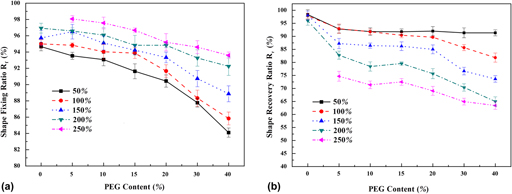Crossref Citations
This article has been cited by the following publications. This list is generated based on data provided by
Crossref.
Mutlu, Betul
Farhan, Muhammad
and
Kucuk, Israfil
2019.
T-Shaped Microfluidic Junction Processing of Porous Alginate-Based Films and Their Characteristics.
Polymers,
Vol. 11,
Issue. 9,
p.
1386.
Gu, Jiafei
Jeong, Yun-Jin
Na, Ju Yong
Seon, Jong Keun
Lee, Dong-Weon
and
Kang, Kiju
2020.
Application of semi-permeable membrane for a scaffold in a nature-mimicking vascular system.
Journal of Membrane Science,
Vol. 611,
Issue. ,
p.
118384.
Chen, S.
and
Amin, S.
2020.
Design of high‐performance curling mascara through utilization of smart thermoresponsive polymer.
International Journal of Cosmetic Science,
Vol. 42,
Issue. 6,
p.
557.
Nonkrathok, W.
Suppakarn, N.
and
Trongsatitkul, T.
2020.
Effects of PEG and MMT contents on mechanical, thermal, and shape memory properties of MMT/PEG/PLA nanocomposites.
Vol. 2279,
Issue. ,
p.
070006.
Bayart, Marie
Charlon, Sébastien
and
Soulestin, Jérémie
2021.
Fused filament fabrication of scaffolds for tissue engineering; how realistic is shape-memory? A review.
Polymer,
Vol. 217,
Issue. ,
p.
123440.
Luo, Fuhong
Li, Jianbo
Ji, Fan
Weng, Yunxuan
and
Ren, Jie
2022.
Preparation of poly(lactic acid)-based shape memory polymers with low response temperature utilizing composite plasticizers.
Polymer Bulletin,
Vol. 79,
Issue. 7,
p.
4761.
Shin, Hojun
Thanakkasaranee, Sarinthip
Sadeghi, Kambiz
and
Seo, Jongchul
2022.
Preparation and Characterization of Ductile Pla/Peg Blend Films for Eco-Friendly Flexible Packaging Application.
SSRN Electronic Journal,
Darie-Niță, Raluca
Irimia, Anamaria
Grigoraș, Vasile
Mustață, Fănică
Tudorachi, Niță
Râpă, Maria
Ludwiczak, Joanna
and
Iwanczuk, Andrzej
2022.
Evaluation of Natural and Modified Castor Oil Incorporation on the Melt Processing and Physico-Chemical Properties of Polylactic Acid.
Polymers,
Vol. 14,
Issue. 17,
p.
3608.
Ikram, Hamid
Al Rashid, Ans
and
Koç, Muammer
2022.
Additive manufacturing of smart polymeric composites: Literature review and future perspectives.
Polymer Composites,
Vol. 43,
Issue. 9,
p.
6355.
Lv, Xuedong
Lin, Haitao
Wang, Zhengxiang
Niu, Ruixue
Liu, Yi
Wei, Yen
and
Zheng, Liuchun
2022.
Synthesis of Biodegradable Polyester–Polyether with Enhanced Hydrophilicity, Thermal Stability, Toughness, and Degradation Rate.
Polymers,
Vol. 14,
Issue. 22,
p.
4895.
Shin, Hojun
Thanakkasaranee, Sarinthip
Sadeghi, Kambiz
and
Seo, Jongchul
2022.
Preparation and characterization of ductile PLA/PEG blend films for eco-friendly flexible packaging application.
Food Packaging and Shelf Life,
Vol. 34,
Issue. ,
p.
100966.
Nonkrathok, Wasana
Trongsatitkul, Tatiya
and
Suppakarn, Nitinat
2022.
Role of Maleic Anhydride-Grafted Poly(lactic acid) in Improving Shape Memory Properties of Thermoresponsive Poly(ethylene glycol) and Poly(lactic acid) Blends.
Polymers,
Vol. 14,
Issue. 18,
p.
3923.
Tekay, Emre
and
Şen, Sinan
2023.
Investigation of shape memory and mechanical properties of styrenic thermoplastic elastomer/PCL blends: Effect of blend composition.
Journal of Materials Research,
Vol. 38,
Issue. 23,
p.
5065.
Mokrane, Nawel
Kaci, Mustapha
Lopez-Cuesta, José-Marie
and
Dehouche, Nadjet
2023.
Combined Effect of Poly(lactic acid)-Grafted Maleic Anhydride Compatibilizer and Halloysite Nanotubes on Morphology and Properties of Polylactide/Poly(3-hydroxybutyrate-co-3-hydroxyhexanoate) Blends.
Materials,
Vol. 16,
Issue. 19,
p.
6438.
Jadhav, Pratibha S.
Joshi, Girish M.
and
Deshmukh, R. R.
2023.
Preparation and characterization of polyacrylonitrile/nitrocellulose engineering blend.
Journal of Applied Polymer Science,
Vol. 140,
Issue. 30,
He, Manjie
Hsu, Yu-I
and
Uyama, Hiroshi
2024.
Design of novel poly(L-lactide)-based shape memory multiblock copolymers for biodegradable esophageal stent application.
Applied Materials Today,
Vol. 36,
Issue. ,
p.
102057.



